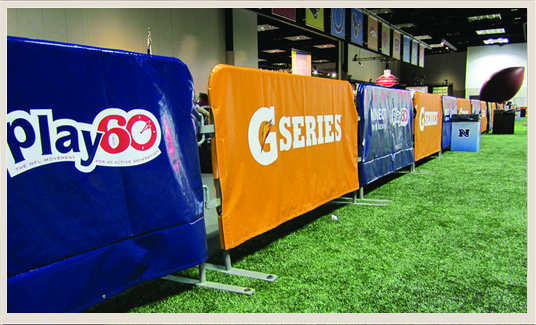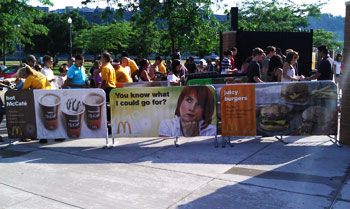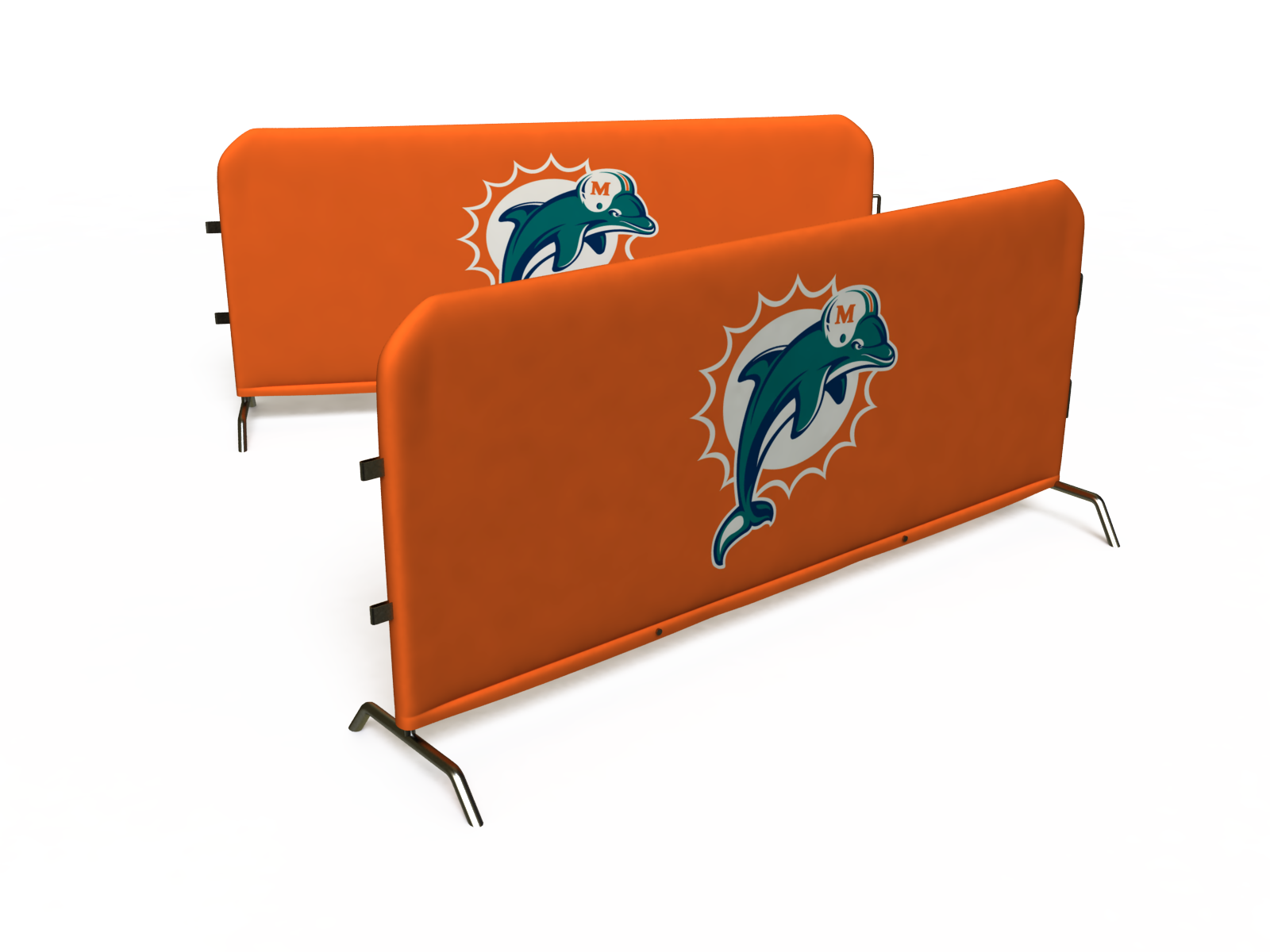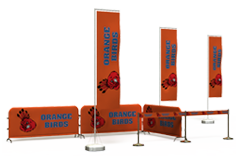Which Print Type is Ideal for Outdoor Signage?
When you’re hosting an event, having the proper equipment to guide foot traffic, set boundaries, and keep crowds in line cannot be overlooked. Steel crowd control barriers are essential to ensuring an event goes well, but plenty of other factors contribute to everything running smoothly. One of these factors is the use of outdoor signage to inform, direct, and warn visitors.
Whether you utilize barrier jackets, hook and loop signs, or some other form of outdoor signage, durability should be your top concern. Signs that are exposed to the elements – heat, sunlight, rain, dirt, etc. – do not have as long of a shelf life as their indoor counterparts. When going through the purchasing process, make sure to consider where and how your signs will be used and choose the print type that fits the application. The three most common print types for outdoor signage are dye sublimation, ink jet, and silkscreen.
Which should you choose? Let’s examine the strengths and weaknesses of each print type:
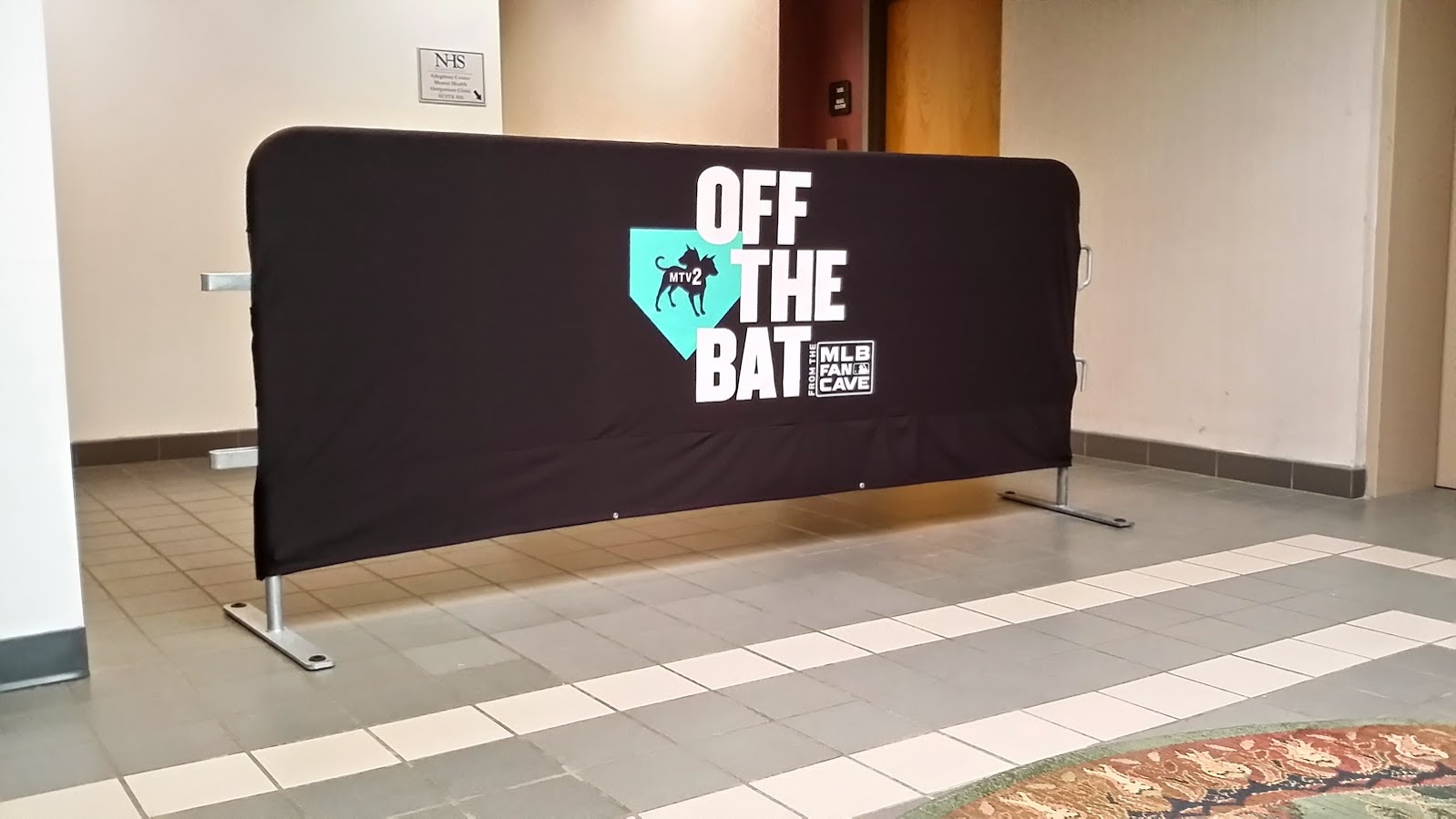
Dye Sublimation
Dye sublimation, commonly used for signs and banners, is a printing process that uses heat and pressure to transfer dye onto materials. This print type is ideal for indoor or stretchy materials because the dyes are infused into the substrate on the molecular level, so cracking or peeling does not happen.
However, dye sublimation is not the ideal long-term solution for outdoor signage because the colors tend to fade more quickly than the other print types. Outdoor signs should be designed to withstand the elements for as long as possible, and dye sublimation does not help in that regard. However, this print method will work for outdoor signage in short-term situations.
InkJet Barricade Covers
Inkjet printing creates a digital image by rapidly depositing droplets of ink onto materials, often through the use of thermal excitation. This print type is perfect for complex signs that utilize many colors. The resulting signs look great, can be relatively inexpensive, and tend to have quick turnaround times.
Inkjet printing is also a great option for outdoor signs because they are long-lasting. The lifetime of a sign can vary greatly depending on its environment, but inkjet is a great choice. However, ink jet signs are not as resistant to scratching or the wear and tear of constant touching/handling. In these cases, the sign could be worn down to expose the white background.
Silkscreen Barricade Covers
The silkscreen printing method utilizes a fill blade to force ink into openings in the substrate. This printing method is ideal for outdoor signage because it is more resistant to scratching and wear and tear than the inkjet method. Just like the other print types, the longevity of signs made through the silkscreen process can vary depending on the environment, but this print method typically lasts the longest.
When it comes to printing signs on steel barrier jackets, the silkscreen print type is generally going to be the best option. Despite this, it is still wise to consider all the factors before coming to a decision; all three print methods have their benefits. Dye sublimation is great for stretchy materials or short-term use, while inkjet is perfect for signs that utilize many colors. When it comes to outdoor signage, durability and longevity often stand out as the two most important aspects, so you can’t go wrong with silkscreen.
